First announced in March 2021, the Asus ROG Phone 5 is the latest in the Asus line of phones aimed at gamers (ROG = “Republic of Gamers”). As such, it relies on the powerful Qualcomm Snapdragon 888 processor to provide competitive speed; moreover, and a display with a refresh rate that can reach up to 144 Hz. This review summarizes its results in our suite of Display protocol tests.
Key display specifications:
- OLED screen
- Size: 6.78 inches (83.7% screen-to-body ratio)
- Dimensions: 172.8 mm × 77.3 mm × 10.3 mm (6.80 in × 3.04 in × 0.41 in)
- Resolution: 1080 x 2448 pixels
- Aspect ratio: 20.4:9, 395 ppi
- Refresh rate: Up to 144 Hz
About DXOMARK Display tests: For scoring and analysis in our smartphone and other display reviews, DXOMARK engineers perform a variety of objective and perceptual tests under controlled lab and real-life conditions. This article highlights the most important results of our testing. Note that we evaluate display attributes using only the device’s built-in display hardware and its still image (gallery) and video apps at their default settings. (For in-depth information about how we evaluate smartphone and other displays, check out our articles, “How DXOMARK tests display quality” and “A closer look at DXOMARK Display testing.”)
Test summary
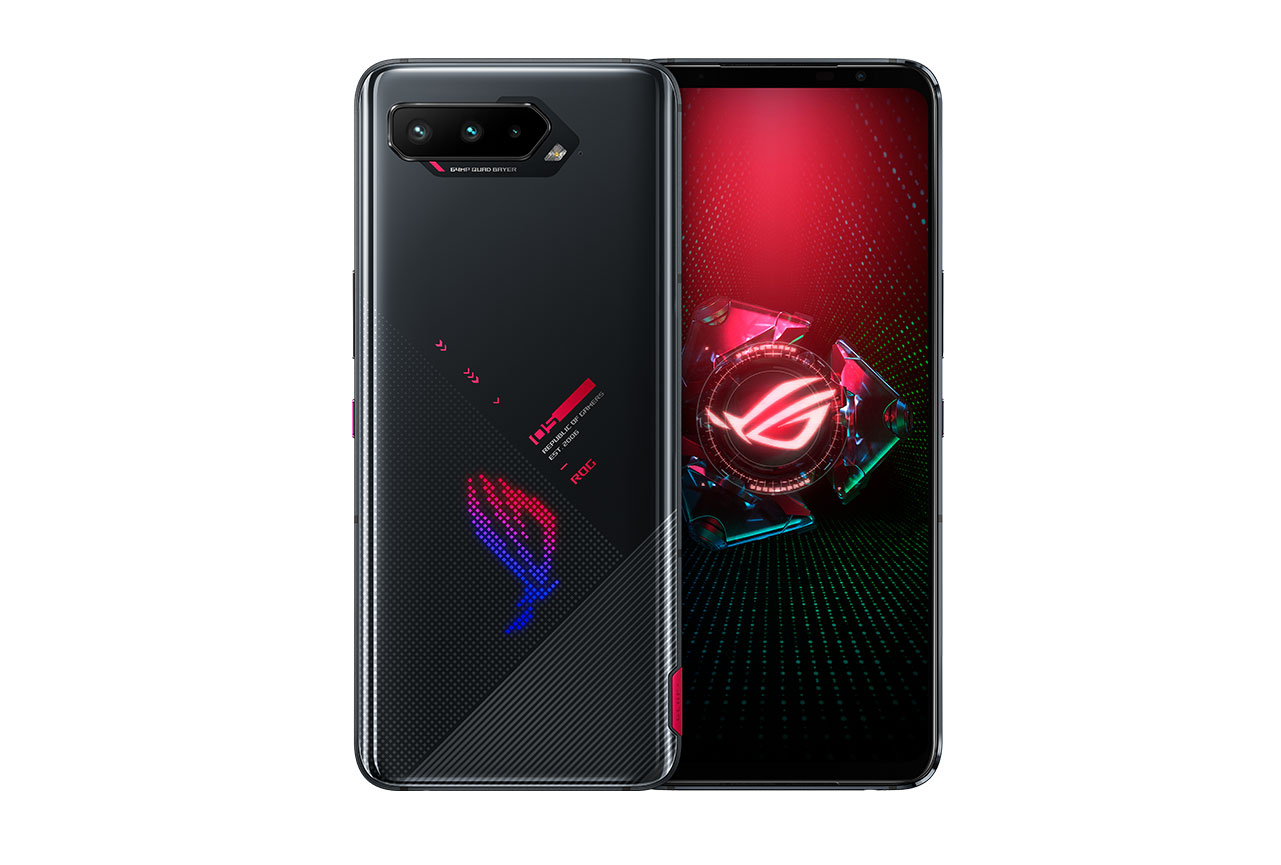 Asus ROG Phone 5
Asus ROG Phone 5


 65th
65th
 22nd
22nd
Pros
- The device has appropriate readability in low light and in indoor conditions.
- Brightness is good when watching HDR10 videos
- Thanks to good touch accuracy and smoothness, the device delivers a comfortable gaming experience.
Cons
- Still image colors are altered by a teal cast in most viewing conditions.
- HDR10 video colors are affected a yellow-green cast that leads to unnatural-looking skin tones.
- The device shows noticeable steps when responding to falling lighting conditions.
While its overall score of 82 still places it in the bottom half of our Display protocol database, the Asus ROG Phone 5 nevertheless improves (and in some areas significantly improves) over its older brand-mate, the ROG Phone 3, which garnered 70 points. The new Asus device almost ties with the Vivo iQOO 7 Legend (83), but none of these three aforementioned devices comes close to the Samsung Galaxy S21 Ultra 5G (Exynos), which at 91 points remains in first place in our database to date.

Readability
Asus ROG Phone 5
64
76
DXOMARK uses the device’s gallery app to show static (still image) content when measuring the device’s display for brightness, contrast, gamma, and blue light impact, etc.
Readability — the ability to see screen content — was one major attribute for which the Asus ROG Phone 5 showed a big improvement over its predecessor, racking up 11 more points than the ROG Phone 3 (53) and edging out the Vivo iQOO 7 Legend (62) as well.
The Asus ROG Phone 5’s readability is good in indoor conditions, though it wouldn’t hurt if the screen were brighter.

Outdoors, the latest Asus device lacks brightness and darker shades are almost invisible.

Further, it is hard to see in direct sunlight — and while many devices struggle under these conditions, both Asus devices have a particularly hard time.
As for brightness adaptation, the ROG Phone 5 shows noticeable steps when adjusting to falling light conditions, making for a very unsmooth performance.
When viewed at an angle, the Asus ROG Phone 5 loses brightness and details in dark areas, leading to an uncomfortable viewing experience, especially for dark content.


The Asus ROG Phone 5 has good brightness uniformity, although our engineers noticed a small, slightly brighter area at the bottom of the device.
With the blue light filter (BLF) on, the device loses some brightness, but it remains quite bright and readable.

Color
Asus ROG Phone 5
75
92
DXOMARK uses the device’s gallery app to show static (still image) content when measuring the device’s display for white point, gamut, uniformity, color fidelity, and blue light filter impact, etc.
At 75 points each, both the Asus ROG Phone 5 and its predecessor ROG Phone 3 are a bit below average when it comes to color rendering. Further, neither Asus device adapts its white point to the ambient lighting.
Viewed indoors, the ROG Phone 5 shows a slight teal cast.

Outdoors, however, the teal cast becomes more intrusive, as it strongly alters the rendering of skin tones along with yellow and blue content.
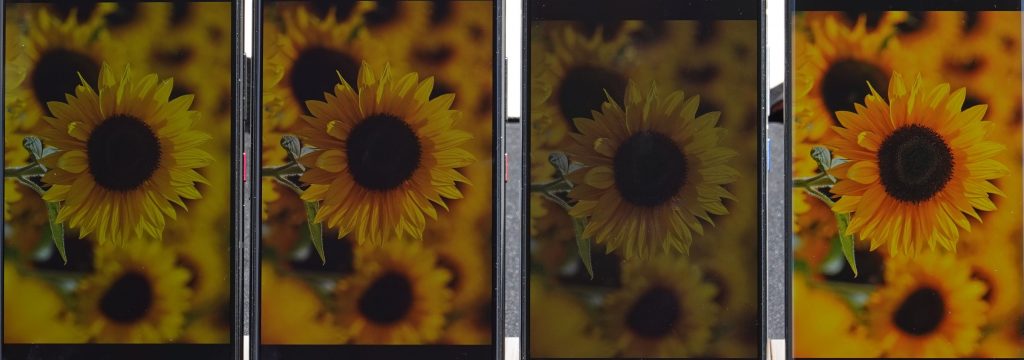
The charts below show the Asus ROG Phone 5’s color reproduction fidelity when under 1000 lux lighting in both the sRGB (standard) color space (left) and the broader DCI-P3 color space (right). The center of each circle is the target color; anything outside the circle represents a noticeable color difference. The further the tip of the arrow is outside of the circle, the more a user will notice the difference between the color on the display and the original color of the source material.


Viewed at an angle, the ROG Phone 5’s color cast alternately shifts from pink to green, depending on the angle acuity. This shifting color cast is also visible when browsing, and the effect is visually quite disturbing.
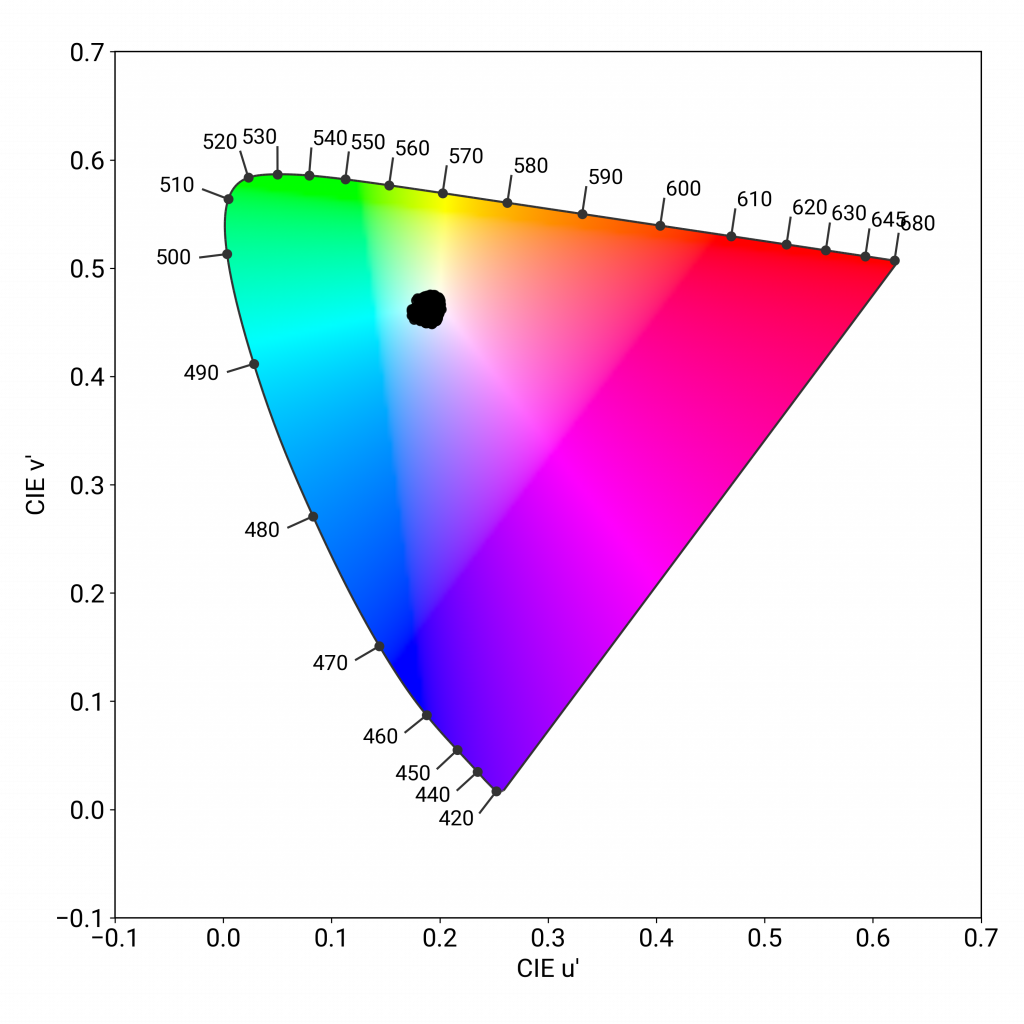

The on-axis views for the ROG Phone 5, its predecessor, and the two comparison devices are shown below…

… with the ROG 5 and the Vivo IQOO 7 showing a noticeable color shift when viewed at a 45° angle:

On a positive note, the ROG Phone 5 is quite uniform in color.
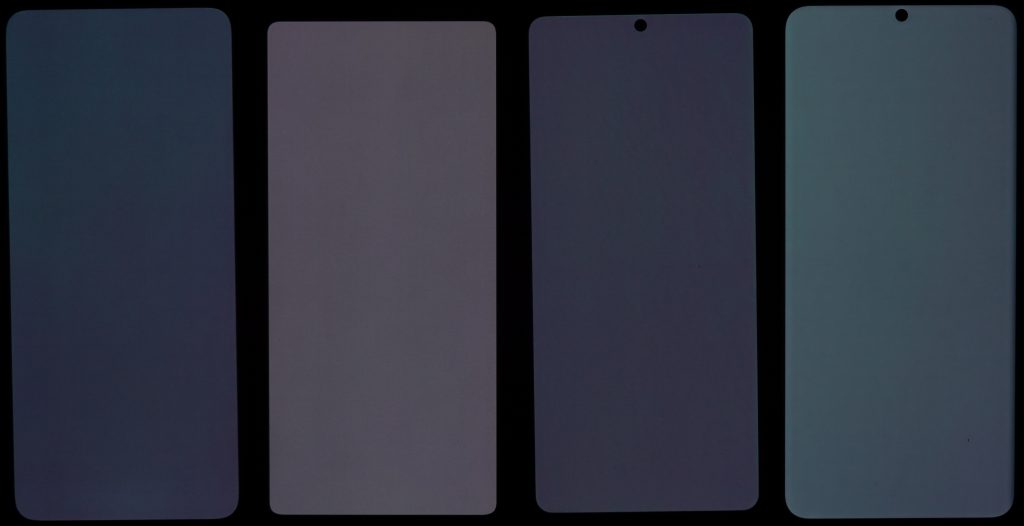
However, when the BLF is on, the latest Asus device shifts to a noticeable orange cast as it attenuates the blue wavelengths.
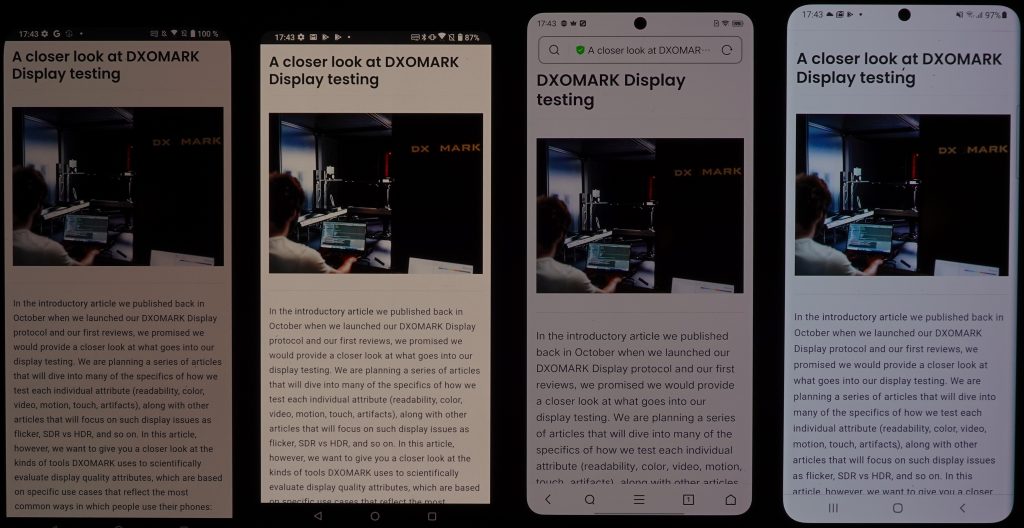
BLF on, from left to right: Asus ROG Phone 5, Asus ROG Phone 3, Vivo iQOO 7 Legend, Samsung Galaxy S21 Ultra 5G (Exynos)

Video
Asus ROG Phone 5
68
91
DXOMARK uses the device’s video (or browser) app to show dynamic content when measuring the device’s display for brightness, contrast, gamma, and color.
Though far behind the Exynos version of the Samsung Galaxy S21 Ultra 5G (90 points), and just a few points behind the Vivo iQOO 7 Legend (71), the Asus ROG Phone 5 once again outscored the ROG Phone 3’s performance in video by 16 points. This was in part because the ROG Phone 5 has toned down the brightness a little from its predecessor, making for a more comfortable viewing experience when watching HDR10 content.


Video contrast, from left to right: Asus ROG Phone 5, Asus ROG Phone 3, Vivo iQOO 7 Legend, Samsung Galaxy S21 Ultra 5G (Exynos)
Whereas the ROG Phone 3 had a blue cast to its video color rendering, the ROG Phone 5 has a visible yellow-green cast in videos, which also adversely affects skin tone rendering.


Motion
Asus ROG Phone 5
77
87
The Asus ROG Phone 5 showed almost no frame drops at 30 fps and no frame drops at 60 fps in our lab tests. That’s the good news. On the flip side, however, it showed noticeable frame drops when playing video games, which impacted its score.
No frame duplications and smooth motion bespeak decent control of motion blur. There is a slight but perceptible delay when resuming video playback after using the slider.

Touch
Asus ROG Phone 5
78
85
The Asus ROG Phone 5 is quite accurate when playing games and in the gallery, and all corners are responsive. Although some frame drops are noticeable when gaming, the device is nonetheless quite smooth, and it is smooth when browsing and in the gallery app.

Artifacts
Asus ROG Phone 5
81
86
The Asus ROG Phone 5’s mean reflectance is 5.0%, and the graph below shows its reflectance curve over the visible spectrum:
The Asus ROG Phone 5 device deals well with flicker:
The Asus ROG Phone 5 has no visible judder at 30 and 60 fps, and handles 24 fps content properly. One drawback is that the ROG Phone 5 responds to ghost touches, especially when held in landscape orientation. Further, aliasing is noticeable, as illustrated below:
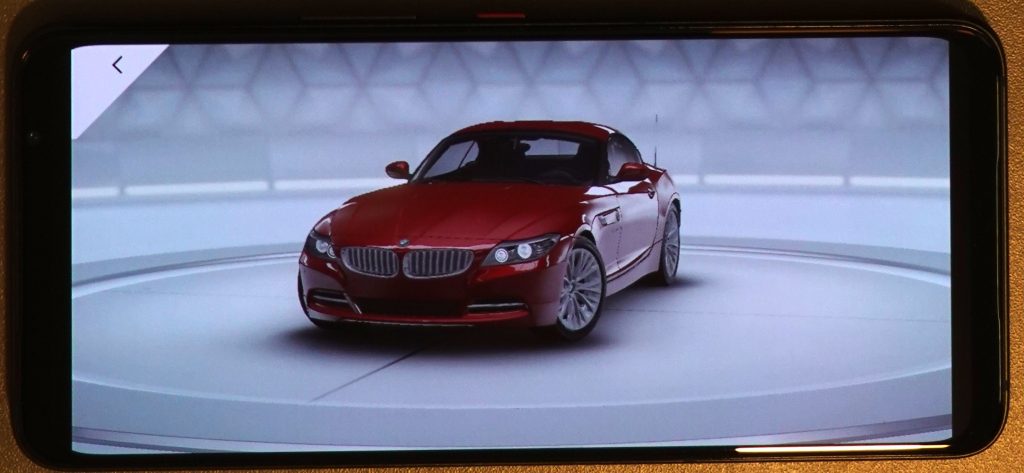
Some closeups:
Conclusion
Citizens of the Republic of Gamers will be pleased to know that the Asus ROG Phone 5 turned in a much-improved display performance over its predecessor, the ROG Phone 3. While still far from the top, the ROG Phone 5 put in a decent (if still slightly below average) performance and has pulled ahead of a number of other devices.




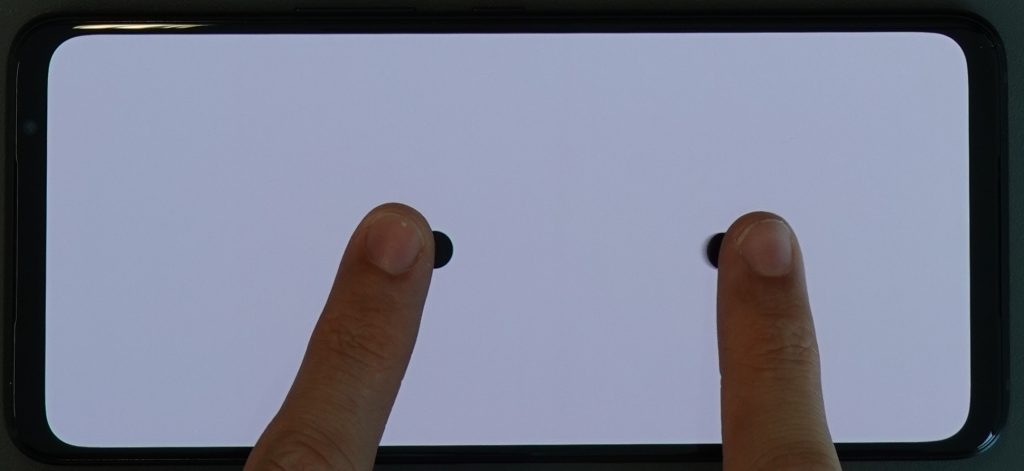
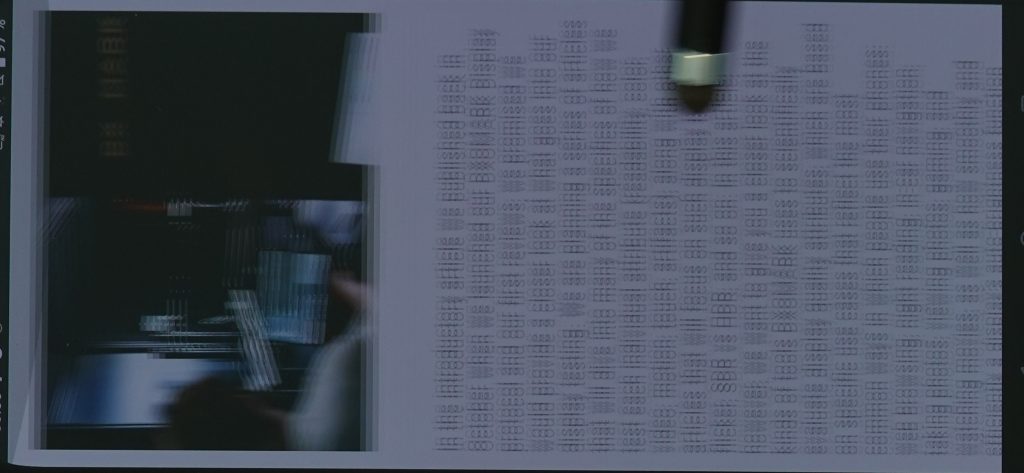



DXOMARK encourages its readers to share comments on the articles. To read or post comments, Disqus cookies are required. Change your Cookies Preferences and read more about our Comment Policy.